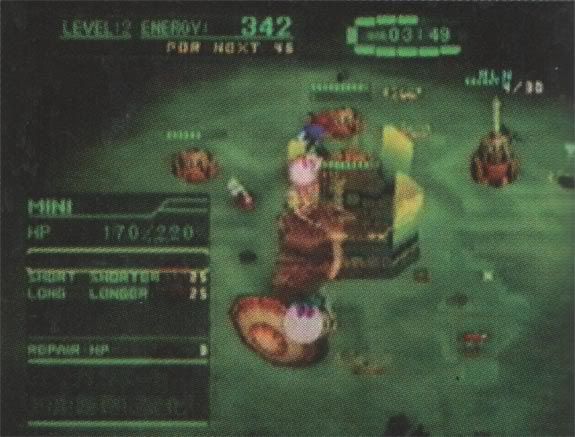![]()
This “debug” version of Ocarina Of Time has come to light some years after the release of the original game. Somehow it was discovered and shared online to please thousands of unseen zelda fans. This is the version that developers used to test specific parts of Ocarina, without having to going around the whole Hyrule. With the Debug version, it’s possible to gain direct access to various areas of the ROM, through simple menu and different numbers. The interesting thing is that in these areas you can find situations and parts of levels remained in the memory, but not used in the final game! You can also visit one of the most famous areas of beta Zelda 64, the “stalfoss room” that was showed years before the final release of the game! An interesting note is that the Debug should be based on the GameCube Master Quest, which makes me wonder why Nintendo still had a playable Stafoss Room in there.
![]() [spoiler /Clicca qui per la versione in Italiano/ /Nascondi la versione in Italiano/]Questa versione “debug” di Ocarina Of Time è venuta alla luce dopo anni dall’uscita originale del gioco. In qualche modo è stata scoperta e condivisa Online, con piacere di migliaia di appassionati. Si tratta della versione che gli sviluppatori usavano per testare parti specifiche di Ocarina senza dover girare per tutto il mondo. Si accede alle zone della ROM attraverso dei semplici menù e numeri vari. La cosa interessante è che fra queste zone è possibile trovare situazioni e parti di livelli rimasti nella memoria, ma non utilizzate nella versione finale! al momento fra quelle scoperte è possibile visitare anche aree famose di vecchie immagini beta di Zelda 64, mostrate anni prima che finisse lo sviluppo! la ROM è stata scoperta da poco, possiamo quindi sperare di ricevere presto nuove scoperte sullo sviluppo della beta di Zelda 64. Un particolare interessante è che la Debug dovrebbe basarsi sulla versione GameCube di Master Quest e mi domando perchè Nintendo abbia mantenuto la Stalfoss Room in versione giocabile dopo tutti questi anni.[/spoiler]
[spoiler /Clicca qui per la versione in Italiano/ /Nascondi la versione in Italiano/]Questa versione “debug” di Ocarina Of Time è venuta alla luce dopo anni dall’uscita originale del gioco. In qualche modo è stata scoperta e condivisa Online, con piacere di migliaia di appassionati. Si tratta della versione che gli sviluppatori usavano per testare parti specifiche di Ocarina senza dover girare per tutto il mondo. Si accede alle zone della ROM attraverso dei semplici menù e numeri vari. La cosa interessante è che fra queste zone è possibile trovare situazioni e parti di livelli rimasti nella memoria, ma non utilizzate nella versione finale! al momento fra quelle scoperte è possibile visitare anche aree famose di vecchie immagini beta di Zelda 64, mostrate anni prima che finisse lo sviluppo! la ROM è stata scoperta da poco, possiamo quindi sperare di ricevere presto nuove scoperte sullo sviluppo della beta di Zelda 64. Un particolare interessante è che la Debug dovrebbe basarsi sulla versione GameCube di Master Quest e mi domando perchè Nintendo abbia mantenuto la Stalfoss Room in versione giocabile dopo tutti questi anni.[/spoiler]
Images:
Videos:





